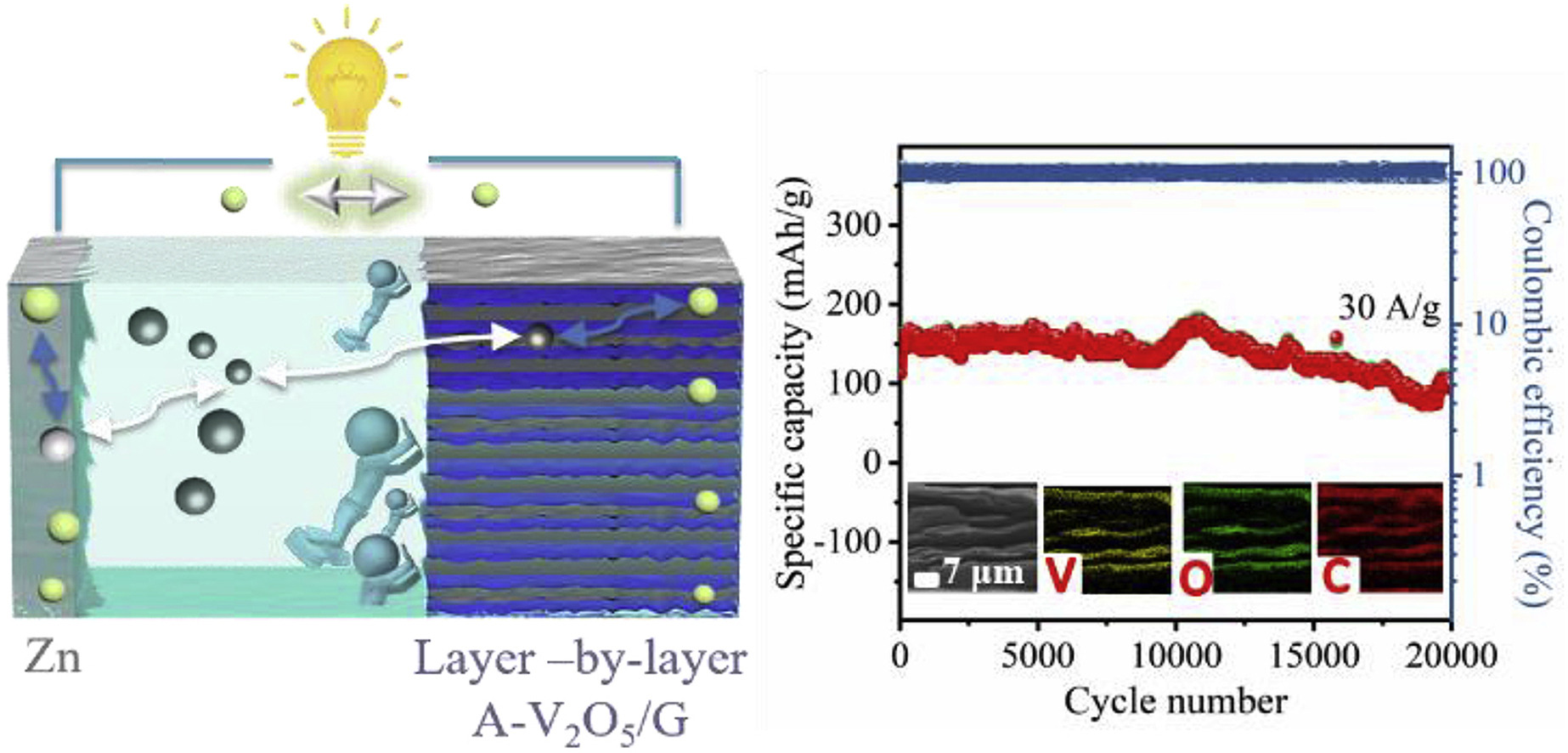X. Wang, Y.G. Li, P. Das, S.H. Zheng, F. Zhou, Z.-S. Wu*
Energy Storage Materials, 2020, 31, 156-163.
DOI: 10.1016/j.ensm.2020.06.010 [PDF]

The aqueous zinc-ion batteries (ZIBs) are highly competitive, exceptionally safe electrochemical energy storage devices, but suffer from the poor cyclability and unattainable capacity caused by structural instability of cathode materials. In this work, we reported a general 2D template ion-adsorption approach to assemble 2D amorphous V2O5/graphene heterostructures with highly stable layer-by-layer stacked structure and ultrathin thickness of 6 nm, for high-safe, rechargeable aqueous ZIBs. Owing to the unique features with strong synergistic effect, the resulting ZIBs show high capacity of 447 mAh/g at 0.3 A/g, extraordinary rate capability of 202 mAh/g at 30 A/g, and ultra-long lifespan up to 20,000 cycles at 30 A/g, greatly outperforming the vanadium based ZIBs reported. Moreover, the new-concept planar interdigital zinc ion micro-batteries, constructed by mask-assisted filtration strategy, display large volumetric capacity of 63 mAh/cm3at 0.2 mA/cm2, high volumetric energy density of 49 mWh/cm3, robust flexibility, and impressive modular integration in series and in parallel for boosting the capacity and voltage output, demonstrative of great potential as microscale power sources. Therefore, this approach will offer various opportunities to construct layer-by-layer stacked 2D heterostructures with fast ion-electron conductivity for ZIBs and other batteries.